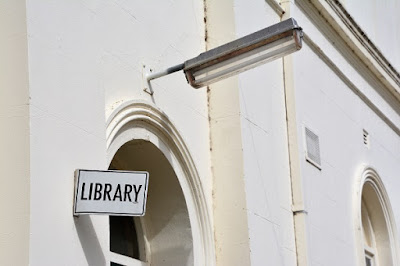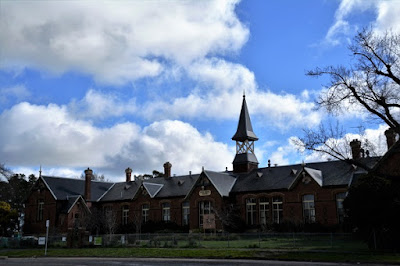·
Six and a half
thousand cars a day flash through the Central Victorian town of Heathcote, on
the Northern Highway half way between Echuca and Melbourne.
Historically,
one of the locals tells me, the town was known as the place to stop “for a pee
and a pie.”
These days,
local businesses have recognised that traffic as ‘business potential’ and they’re
luring them in with coffee – pub and coffee, antiques and coffee, gifts and
coffee, bakery and coffee, wine and coffee; everyone’s jumped on the coffee
bandwagon and you can find good coffee and pretty little courtyards in the most
unexpected places.
The significant
beneficiaries of all the passing traffic though, are the town’s two bakeries.
They’re generally pumping and in the summer, it’s not unknown for a fifty-metre
queue to form down the road – hence there are bakery expansions ‘on the drawing
board.’
Heathcote (Pop:
app 3,000), is a testament to the growth and rejuvenation of small town
Australia. Like many of the little Central Victorian towns I’ve visited, it
exudes an optimism that is almost palpable, as locals band together to help
their place “reach its full potential.”
It’s one of Australia’s
growing wine regions, famous for its award-winning Shiraz, and with around 70
wineries in the area (about 30 of them small, boutique family operations),
people are flocking to the region to savour the tastes.
Nestled at the
foot of the McIvor and McHaig ranges, Heathcote came into being on the back of
gold discoveries in the 1850s. At its gold rush peak, Heathcote had a population
of around 35,000, with people predominantly living in tents and shanties on the
gold fields. At that time, there were at least three breweries, 22 hotels, two
flour mills, a bacon factory, a hospital, banks and several wineries.
Today, wine is
the ‘new gold’ and a number of new varieties like Sangiovese, Viognier,
Vermentino and Tempranillo are being grown in the area. Cellar doors are
proliferating and the annual Heathcote on Show in June, the Heathcote Wine Show
in August and the October Wine and Food Festival, are all putting the town on
the wine lovers’ map.
For me,
Heathcote is all about its long, pencil-thin High Street, bordered on one side
by sportsgrounds, a few businesses and
houses; and other the other, by a string of very fine old shop fronts and
elegant gold rush buildings. Chief among them are the old Court House buildings
(1864-1989) [now housing a craft store], the Town Hall, the old banks (now
repurposed), and the stunning little Mechanics Institute (1900), that I rather fancy
living in. I’ll just have to find new premises for the Senior Citizens, the
Girls Guides and the Lions Club.
One of the old
banks is now base for a wine company and a chocolate café; and like most small
towns, you get the classic example of the one-stop shop, offering everything
from gifts, candles and toys to massage, alternative therapies, meditation,
numerology and tarot readings. A chiropractor offering pain-free back treatment
is wedged between the pub (Cougars, 6 for $21) and a winery cellar door; and a takeaway (or eat in)
is wedged between a funeral director and a newsagency.
Real estate
windows always make interesting reading and apart from a good number of houses
for sale and very good prices, you can
also pick up an olive grove (38 acres with 1,500 olive trees established 13
years ago), for AUD$350,000 - $380,000 – which seemed extraordinarily cheap to
me; or boarding kennel – house and
business, for AUD$820,000 - $860,000.
I spent most of
my time in Heathcote taking photographs and talking to people, so I’ll
definitely need to go back. I’ll wait until spring, when all those vineyards
nudging up against the town, come into leaf. I expect it will be beautiful then.
There are numerous good picnic spots around the town and I rather like the
sound of The Valley of Liquid Ambers – I’m not sure if that’s trees, or local
code for some special liquid beverage that I probably shouldn’t drink while I’m
driving. I intend to find out!

















































